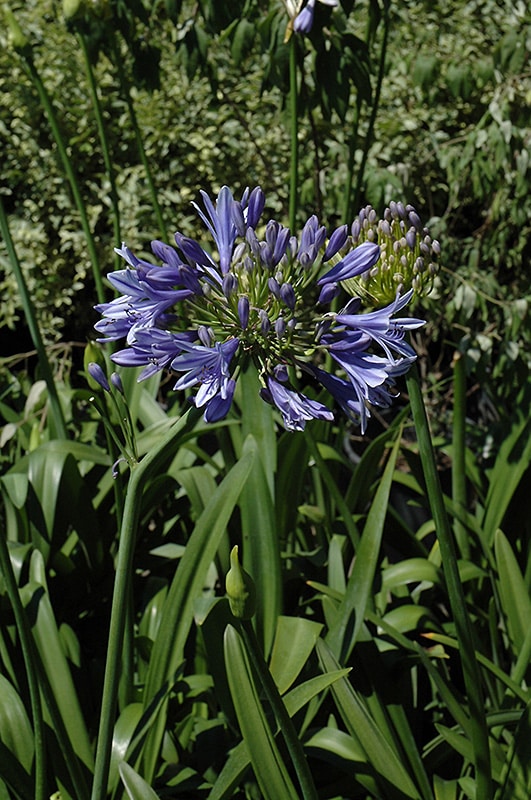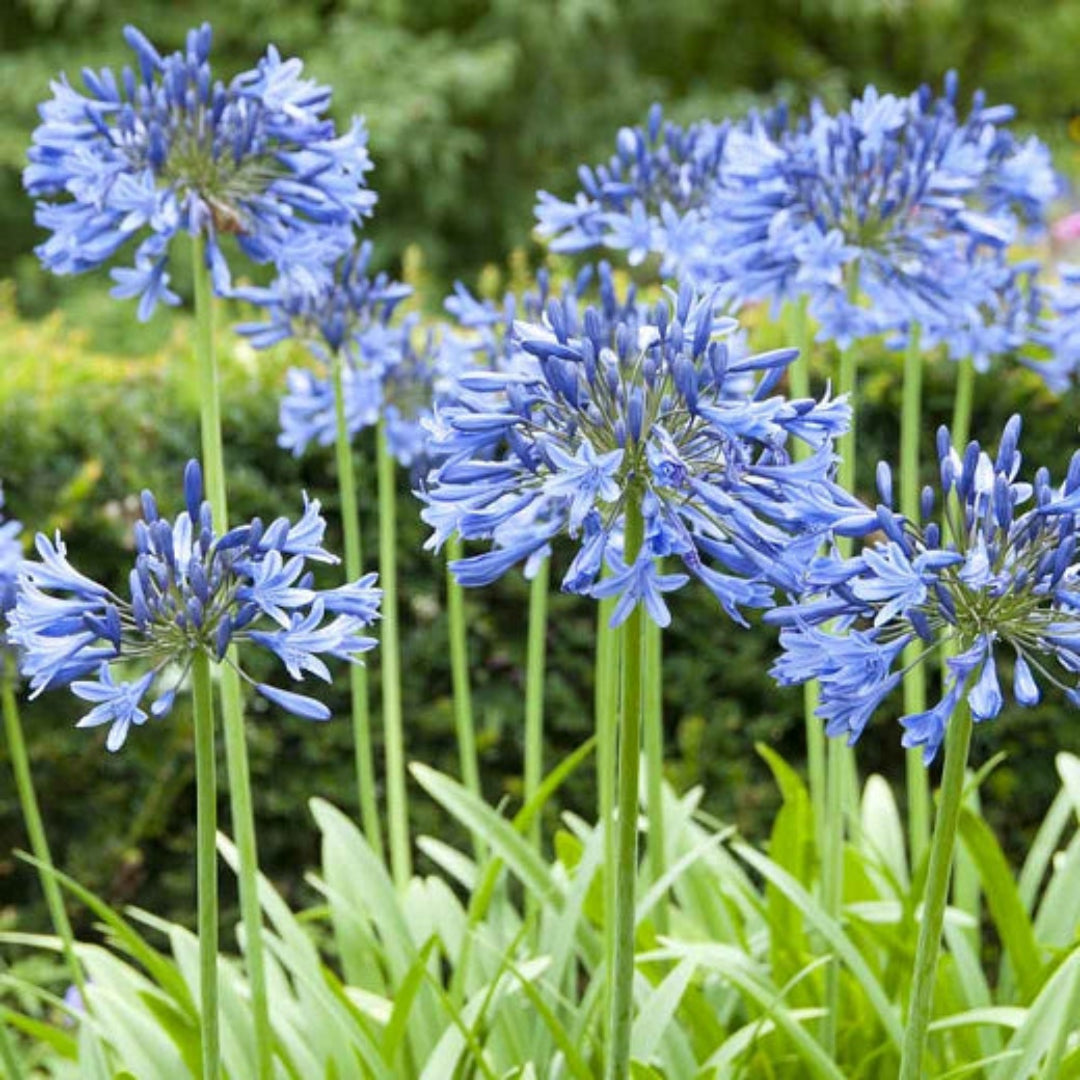Sensational Agapanthus: Enhancing Your Garden's Elegance
Sensational Agapanthus: Enhancing Your Garden's Elegance
Blog Article
Letting Loose the Secret to Effective Agapanthus Cultivation: Advice for a Flourishing Garden
In the realm of horticulture, cultivating agapanthus successfully calls for a critical technique that encompasses different aspects of plant care. With mindful attention to detail, one can unlock the tricks to nurturing these sensational blossoms, resulting in a garden that prospers with appeal and vibrancy. By understanding the subtleties of agapanthus farming, one can produce an atmosphere where these plants thrive and flower perfectly. In the following conversation, we will certainly explore crucial ideas and methods that will certainly guide you in the direction of a thriving agapanthus yard, offering insights into ideal practices, dirt problems, watering methods, and a lot more.
Growing Agapanthus: Best Practices
When growing Agapanthus, proper soil prep work is vital for making sure successful development and growth of these beautiful blossoms. Agapanthus, frequently referred to as Lily of the Nile or African lily, flourishes in well-draining dirt with a slightly acidic to neutral pH level - Agapanthus. Before growing, it is essential to change hefty clay soils with organic matter such as garden compost or peat moss to improve drainage and supply essential nutrients for the plants
To plant Agapanthus, choose a location that receives full sunlight to partial color, as this will certainly advertise healthy and balanced development and abundant blooming. Dig a hole twice the diameter of the plant's origin round and position the Agapanthus at the very same deepness it was formerly growing. Delicately backfill the opening with dirt, weighing down strongly to eliminate any type of air pockets around the roots.
Water the newly planted Agapanthus thoroughly and continue to maintain the soil evenly moist, particularly during the plant's active expanding period. Agapanthus. Applying a balanced plant food once a month can better sustain the plant's growth and flowering. By following these finest methods for planting Agapanthus, you can create a spectacular display screen of these fascinating flowers in your garden
Suitable Soil Conditions for Agapanthus
For optimum development and flowering success of Agapanthus plants, guaranteeing the dirt problems are optimal is essential. Agapanthus flourishes in well-draining dirt with a somewhat acidic to neutral pH level varying from 6.0 to 7.0. This sort of soil permits for sufficient water drainage, preventing waterlogging which can bring about root rot. To improve soil water drainage, consider including organic issue such as compost or peat moss when preparing the growing website. Moreover, Agapanthus prefers dirt that is abundant in nutrients, so including a balanced plant food throughout the growing season can promote healthy development and vivid blooms.

Watering and Feeding Tips
To make certain healthy and balanced development and lively flowers, correct watering and feeding methods are important for effective Agapanthus farming. Agapanthus plants profit from regular watering, particularly throughout the expanding season. It is suggested to water deeply when a week, making sure the soil is damp but browse around this web-site not soaked. Throughout heat or in pots, even more regular watering may be required to stop the dirt from drying totally.
When it concerns fertilizing Agapanthus, a balanced plant food with equivalent components nitrogen, phosphorus, and potassium can be used in the springtime to promote healthy and balanced growth and flowering. Slow-release fertilizers are ideal for providing nutrients gradually over an extended duration. Avoid over-fertilizing, as this can lead to too much foliage development at the cost of flowers.
Additionally, incorporating raw material like garden compost into the dirt can enhance nutrient degrees and enhance dirt framework, helping in the total wellness of the Agapanthus plants. By complying with these watering and feeding pointers, garden enthusiasts can ensure their Agapanthus plants flourish and generate spectacular display screens of blossoms.
Trimming and Deadheading Techniques
Correct trimming and deadheading methods play a crucial function in keeping the wellness and visual appeals of Agapanthus plants, enhancing the crucial practices of watering and feeding for successful farming. my link Pruning Agapanthus involves eliminating spent blossom heads, yellowing or dead fallen leaves, and general shaping of the plant to advertise better growth. Deadheading, the process of eliminating discolored blossoms, not only boosts the plant's appearance yet also encourages additional flowering.
When deadheading Agapanthus, it is a good idea to trim off the blossom stem at the base using sharp, clean shears. This procedure reroutes the plant's power from seed manufacturing back into root and vegetation development, promoting a much healthier and more durable plant. Normal deadheading can prolong the blooming period of Agapanthus and protect against self-seeding, which can lead to overcrowding.
In terms of pruning, Agapanthus generally take advantage of a light trim after flowering to clean up the plant and urge fresh growth. Reducing the spent flower stems and getting rid of any type of broken or dead foliage helps preserve the plant's vitality and general look. Nevertheless, it is necessary to prevent reducing navigate to these guys into the crown of the plant, as this can weaken its health and wellness.

Protecting Agapanthus From Vermins and Diseases
Executing efficient bug and condition monitoring techniques is important to protecting the health and vitality of Agapanthus plants in cultivation. Agapanthus are typically hardy plants, yet they can still come down with various pests and diseases if not effectively taken care of. One typical bug that impacts Agapanthus is the Agapanthus borer, a caterpillar that passages into the plant, causing damage to the leaves and blossoms. To stop infestations, regular inspection of the plants is important. If borers are identified, they can be by hand gotten rid of, or insecticidal soap can be utilized as a control step.
Along with insects, Agapanthus are vulnerable to conditions such as origin rot and fungal fallen leave spots. These concerns can usually be stopped by making sure appropriate drain and preventing overwatering. Affected parts of the plant should be promptly gotten rid of to stop additional spread if signs of disease show up. Fungicides might also be made use of as a treatment action, adhering to the producer's directions carefully. By staying watchful and addressing parasite and condition issues immediately, gardeners can help their Agapanthus prosper and prosper.

Final Thought
In final thought, effective farming of agapanthus needs correct planting strategies, perfect soil conditions, appropriate watering and fertilizing, regular pruning and deadheading, and defense from illness and insects. By complying with these techniques and suggestions, gardeners can make sure a flourishing garden loaded with stunning agapanthus blooms. Agapanthus. Keep in mind to maintain consistent treatment and interest to detail to promote the wellness and durability of these sensational plants
When growing Agapanthus, correct soil preparation is vital for making sure successful growth and development of these beautiful blossoms.Water the freshly planted Agapanthus extensively and proceed to keep the dirt equally damp, especially throughout the plant's energetic expanding season.For optimal development and blooming success of Agapanthus plants, ensuring the dirt conditions are optimal is essential. When transplanting or planting Agapanthus, ensure the dirt is well-prepared to offer the necessary structure for the plants to establish themselves successfully. One usual insect that influences Agapanthus is the Agapanthus borer, a caterpillar that passages right into the plant, triggering damages to the blossoms and leaves.
Report this page